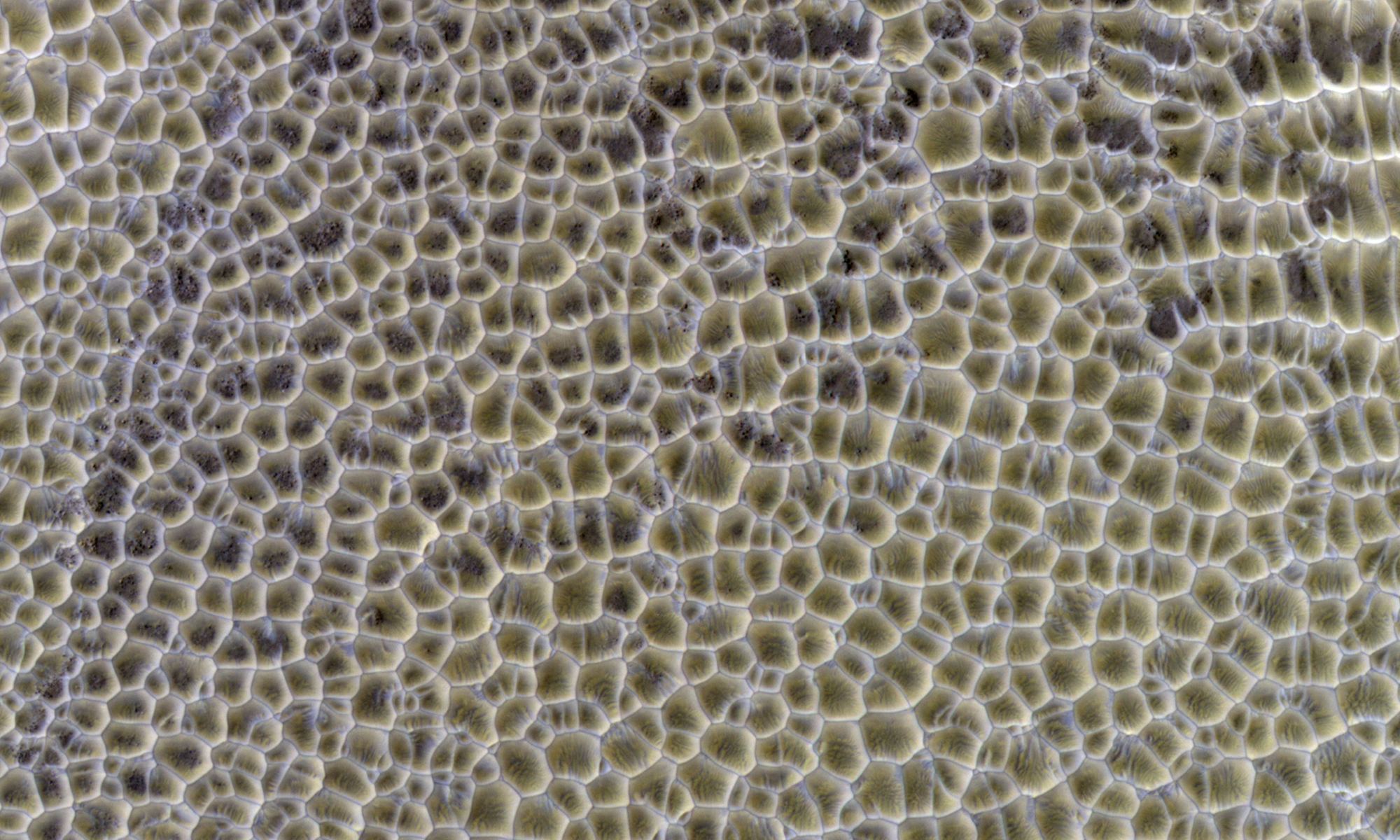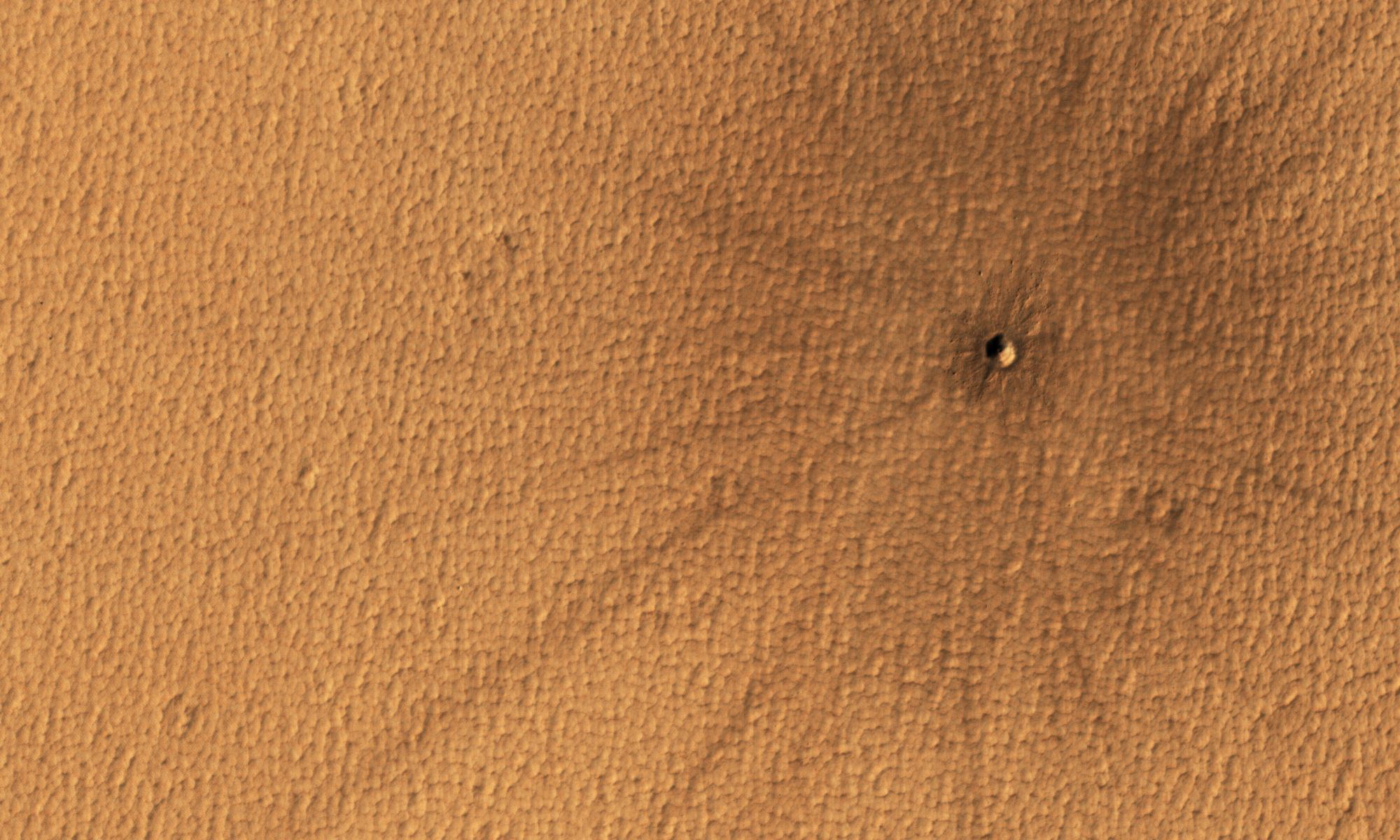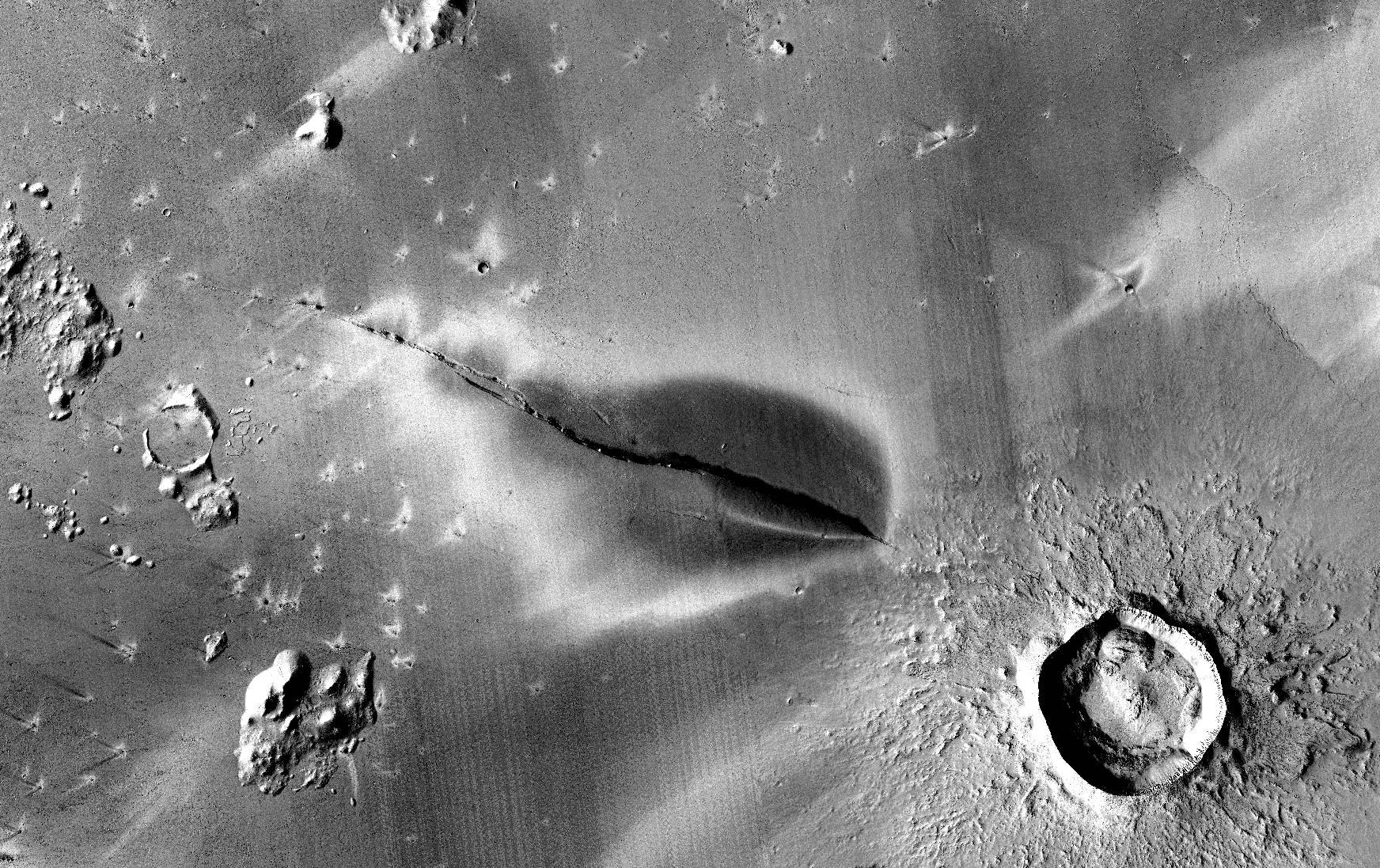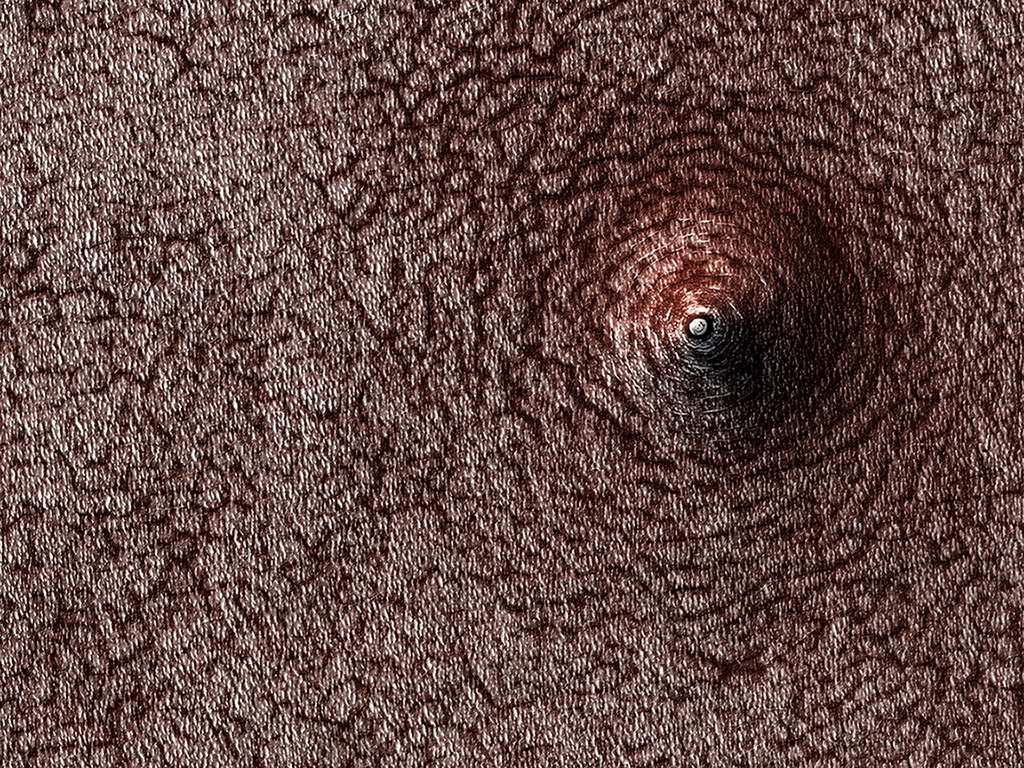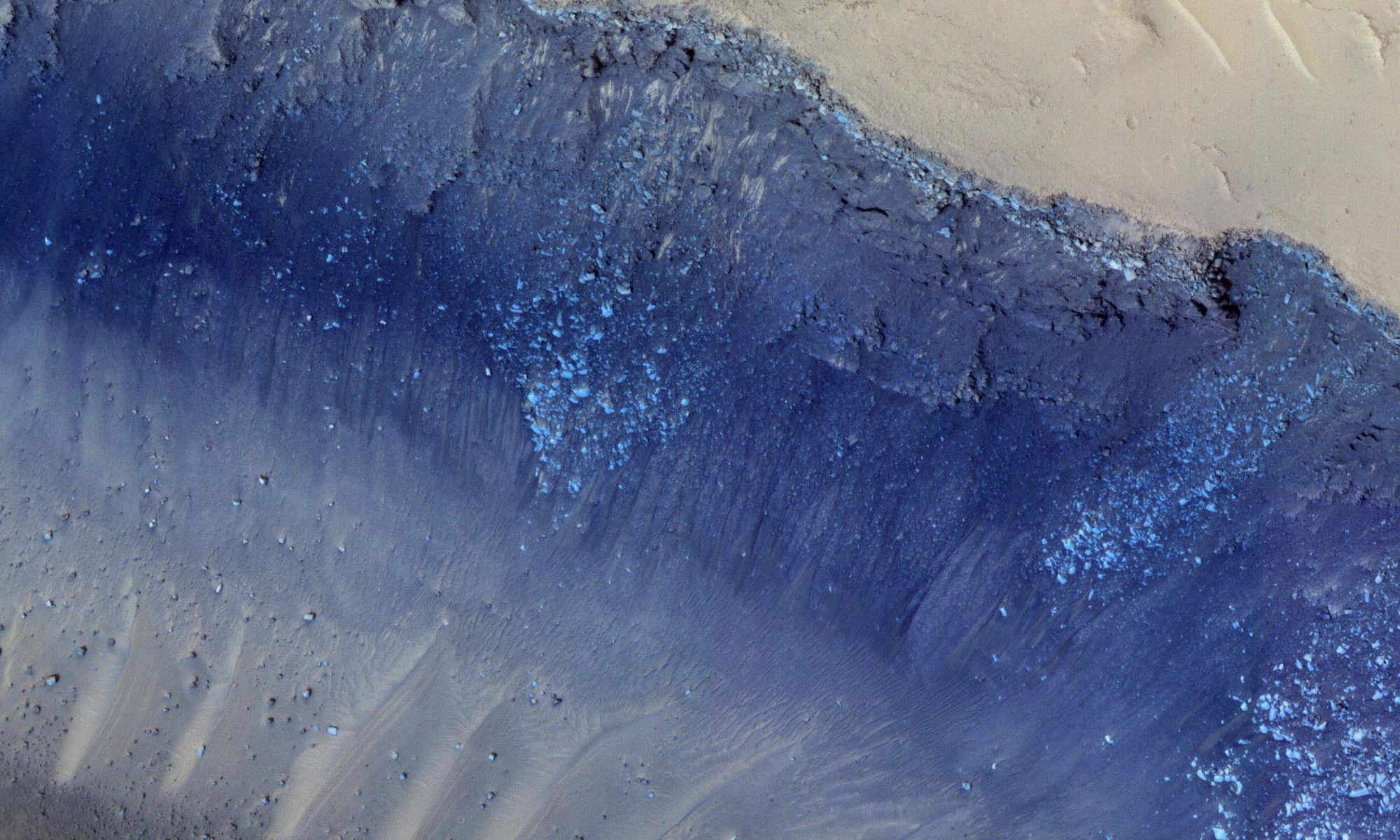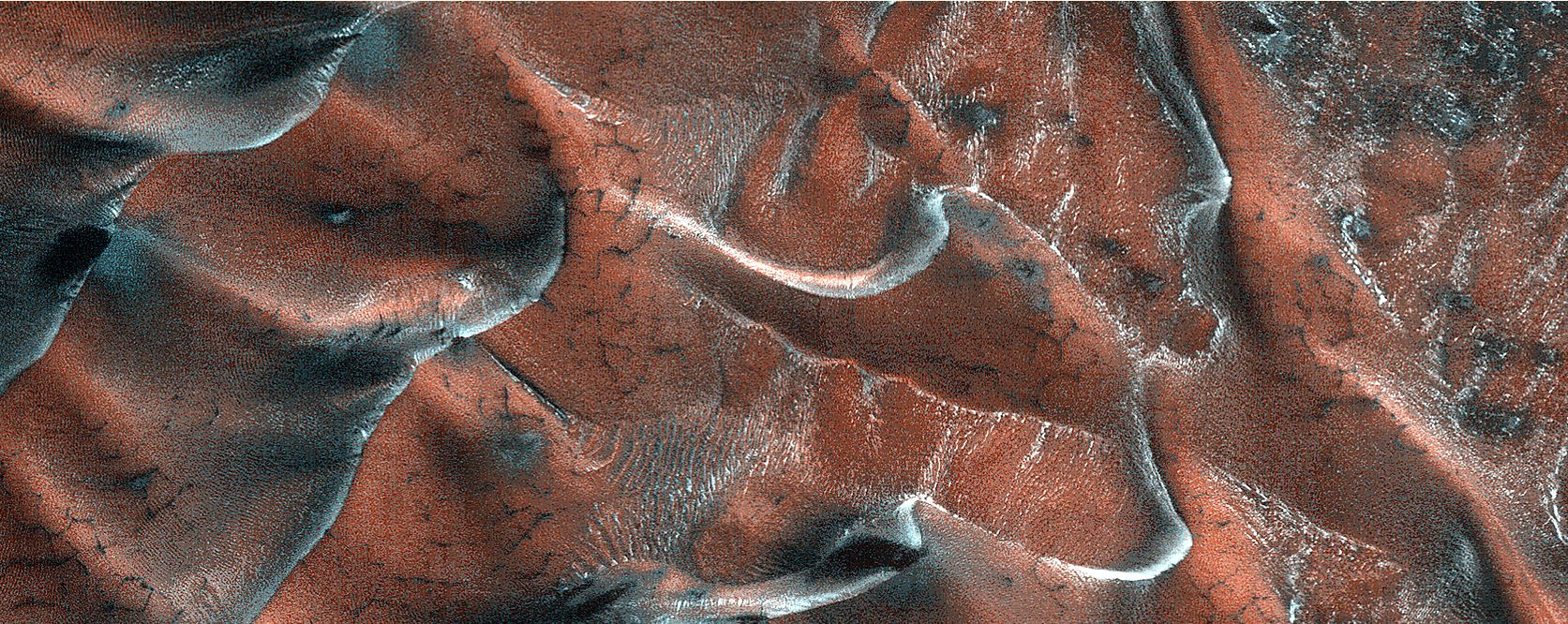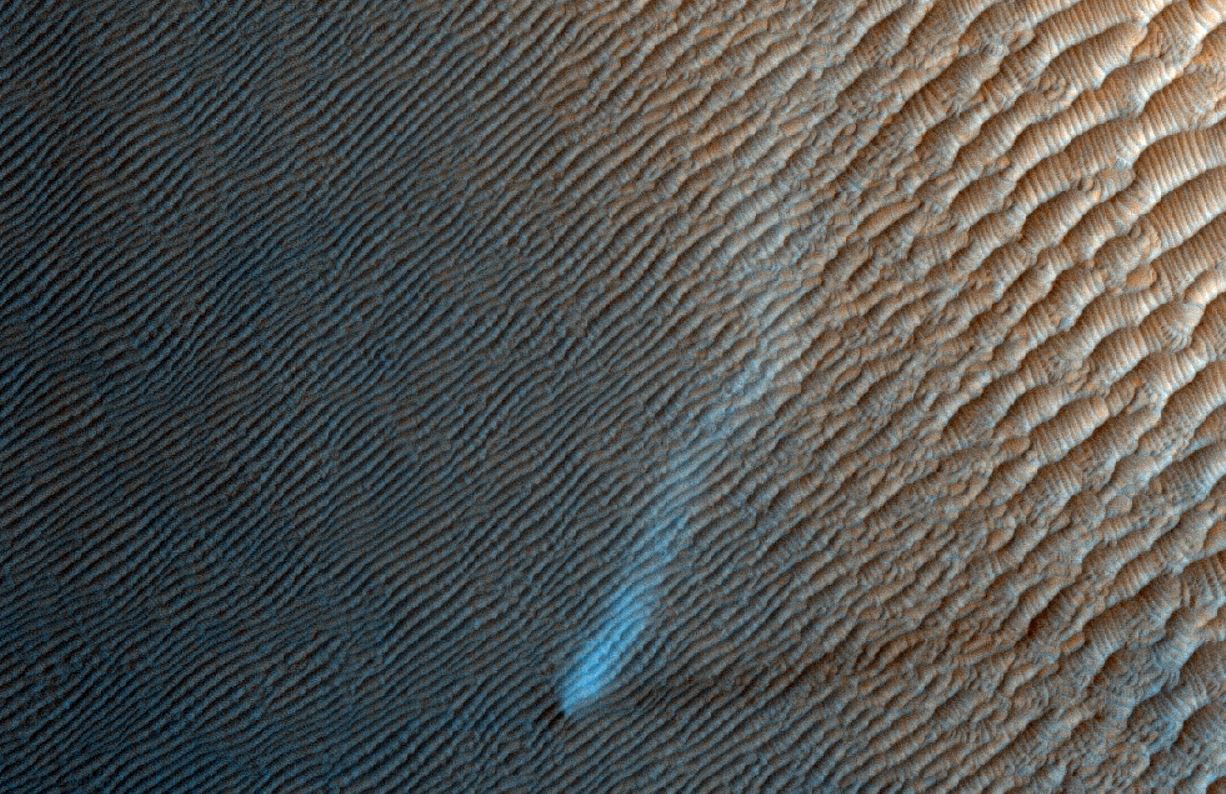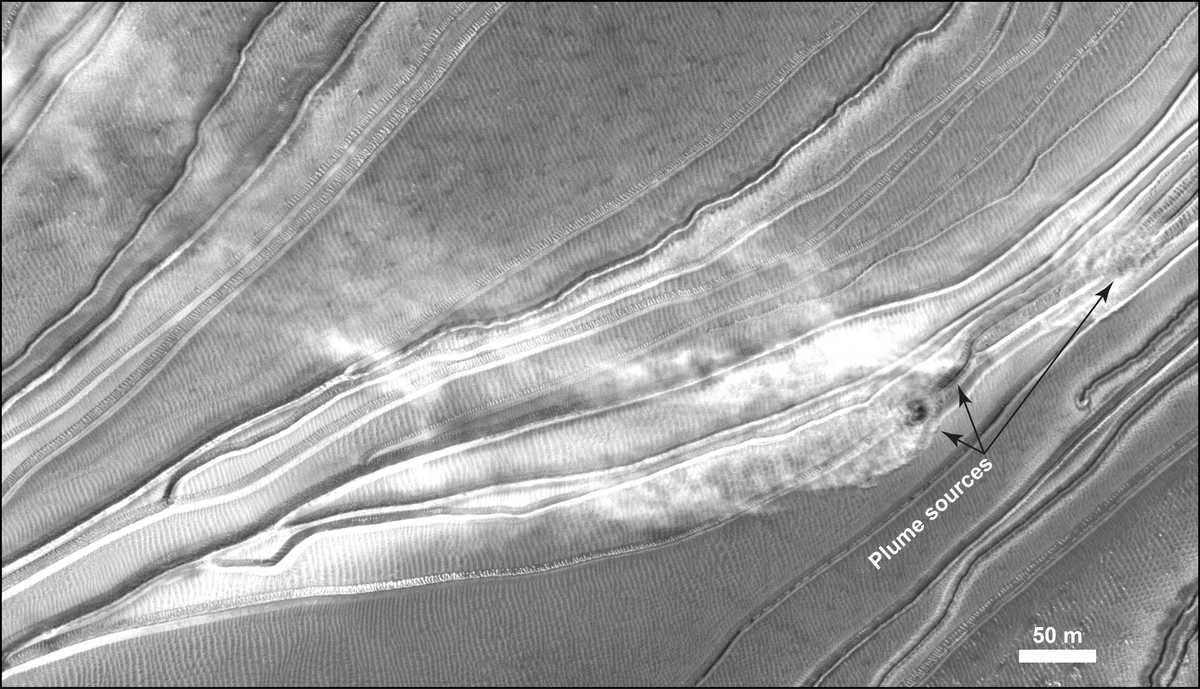In our exploration of Mars, we’ve seen some strange but naturally occurring shapes. Polygons – a shape with at least three straight sides and angles, typically with five or more – have been seen in several different Martian landscapes, and scientists say these shapes are of great interest because they often indicate the presence of shallow ice, or that water formerly was present in these areas.
Continue reading “Strange Intersecting Sand Dunes on Mars”Strange Intersecting Sand Dunes on Mars
